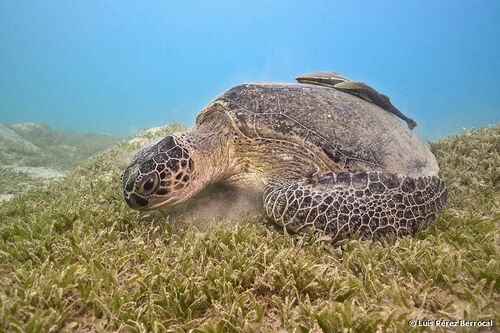
Green Sea Turtle
The green sea turtle, Chelonia mydas, glides through warm oceans with its smooth, olive-toned shell. Renowned for its epic migrations to nest, this gentle giant shapes marine ecosystems by grazing on seagrass, vital for undersea health. A symbol of oceanic grace and ecological harmony.
50-70 years
Lifespan
Endangered
Conservation Status
Decreasing
Population Trend
Distribution Range of the Green Sea Turtle
Chelonia mydas, commonly known as the green sea turtle, has a broad geographical distribution centered around tropical and subtropical seas globally. They are primarily found in the Atlantic, Pacific, and Indian Oceans, as well as the Mediterranean Sea. Key regions include the coasts of the United States (eastern and western), the Caribbean, Mexico, Central and South America, Southeast Asia, the Pacific Islands, Australia, and Africa. Notably, major nesting sites are found in places like Costa Rica's Tortuguero and Australia's Great Barrier Reef.
Green Sea Turtle's Habitat
Environmental Conditions
Green sea turtles are typically found in marine environments, thriving in warm, shallow waters such as lagoons and coral reefs. They prefer areas rich in seagrass, as it forms the primary component of their diet as adults. Nesting usually occurs on sandy beaches, which are crucial for their reproductive cycle. Temperature plays a significant role, with sea turtle embryos requiring certain thermal conditions for successful development.
Ecological Niche
Green sea turtles fulfill a unique ecological niche as both marine and terrestrial inhabitants, especially significant for their role in maintaining healthy seagrass beds and coral reefs. Their grazing on seagrasses helps increase the productivity of these ecosystems, providing habitat and feeding grounds for various marine species. Furthermore, they contribute to nutrient cycling between marine and terrestrial systems through nesting activities.
Copyright @ Nature Style Limited. All Rights Reserved.
 English
English